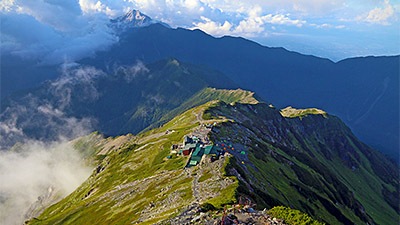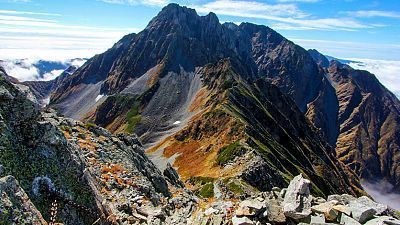Nikko’s frozen waterfalls: Unryu Keikoku

Deep in the mountains of Nikko, carved out between the rugged peaks of Mt. Nyoho and Mt. Akanagisan lies a narrow ravine by the name of Unryu Keikoku (ē_Ś│īkÆJ), or "Cloud Dragon Valley." In warmer months, waterfalls stream down the steep valley walls, seemingly dropping from the clouds that collect high above among the surrounding mountaintops.
But in winter, these gentle falls become cascades of frozen water tumbling over itself, creating thousands of hanging ice daggers and huge columns thick enough to ice climb.
Reachable in a pleasant 2-hour hike, this beautiful valley has become a popular winter hiking spot for hikers hoping to enjoy these rare views.
The trailhead is located at the end of a 20-minute drive from the Nikko train stations through a pretty forest. For those without a car, unfortunately there aren't any nearby bus stops, but the site is well-known enough by locals that some taxi drivers are sometimes willing to drive hikers to and from the spot.
Once at the trailhead, there are two paths to choose from: a high road up switchbacks along a service road (on the left) or a lower road that hugs a mountain stream (on the right). After preparing all my gear, I chose the high road and began my journey.




Along the way, you'll encounter a great number of dam and erosion control projects. The rivers that begin in the Nikko mountains often flood during the spring and rainy season, and in the past have even threatened towns as far downstream as Tokyo. Some of the dams here date back over 100 years and are now designated as national cultural assets.

After about 90 minutes of hiking, I found myself at a small landing with steps leading down to the approach to Unryu Keikoku itself. From this point, the trail leads on top of the valley stream bed itself, jumping back and forth over still-flowing water exposed under the snow and ice.
This was good spot to put on crampons. From late December through early March, a pair of at least 6-point crampons strapped to the bottoms of your boots will help immensely to provide extra traction on the slippery terrain ahead, and allow you to explore deeper into the valley in snowy or icy conditions (which are common). Snowshoes, on the other hand, are more likely to get in the way than help here as the rocky, narrow paths don't usualy afford enough room or deep snow to be useful.
And with my crampons fastened, I headed into the valley of ice, snow and clouds.









After passing among the largest ice columns, the view of the frozen Unryu Waterfall itself was a pretty incredible sight to behold. From this point, the path becomes more treacherous and challenging, and in fresh snow (like I encountered), can be very difficult to find at all. I managed to find a snowy slope leading up a bit further which led (with some improvisation, and liberal use of my crampons) right up to Unryu Waterfall itself. On weekends, this area can become bustling with ice climbers scaling the frozen falls.







To see the waterfalls while they are frozen, the best timing for this hike is between late December and early March. Temperatures can reach well below freezing here, so warm winter clothes, gloves, and sturdy waterproof boots are a must. 6-point or higher crampons are also highly recommended when the path is snowy or icy (which may not be obvious until well into the hike).
Rock slides are a frequent occurence in this valley. It's safer to move quickly when walking through exposed areas next to cliffs without lingering longer than necessary. When walking near frozen waterfalls and ice formations, remember that these can break and fall at any time, especially near the beginning and end of the season and in warmer conditions. Be very cautious when approaching or going under overhanging ice; if you hear any cracking sounds, get away as fast as possible.
And, of course, don't climb on ice without ice climbing training and appropriate gear.





